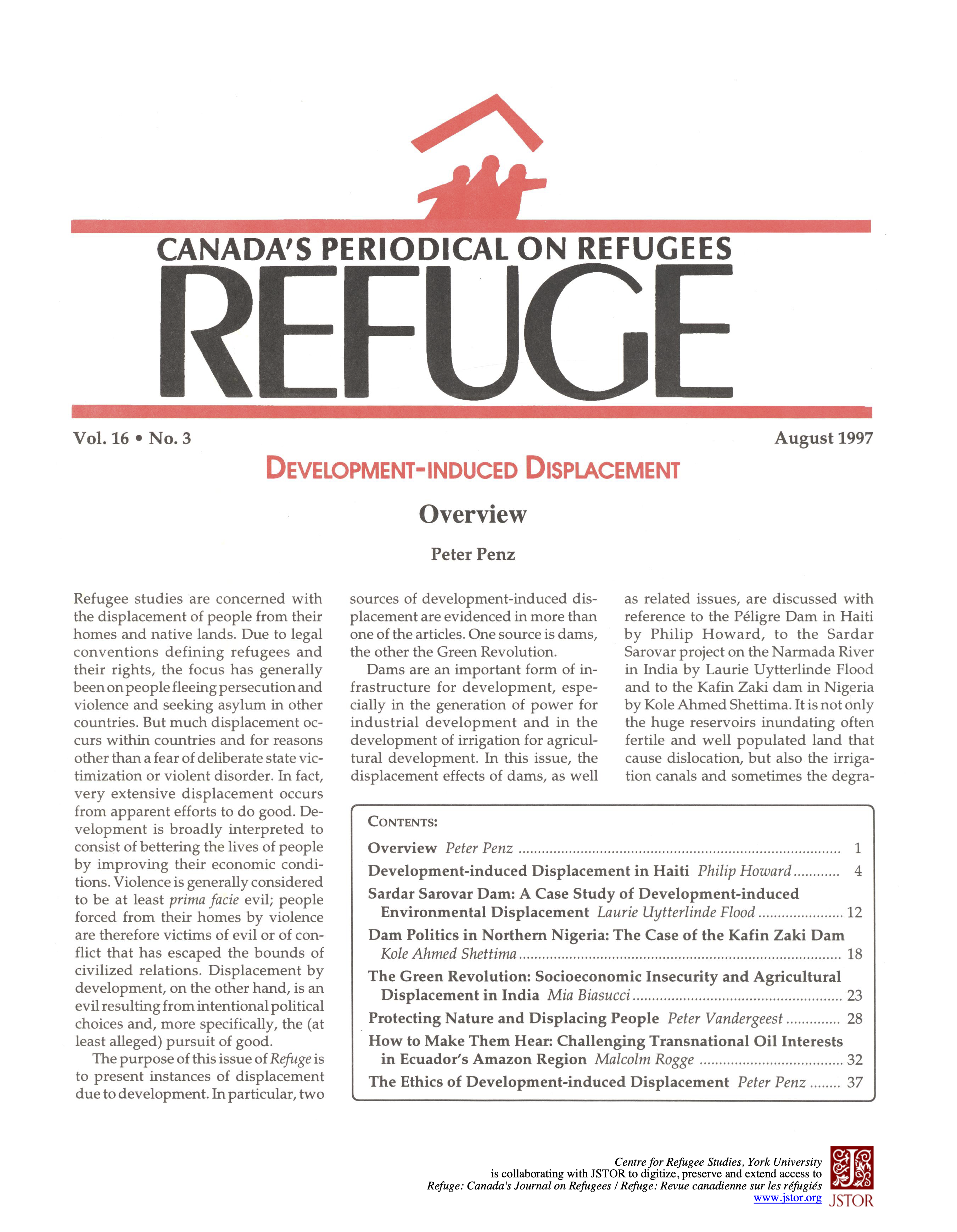The Green Revolution: Socioeconomic Insecurity and Agricultural Displacement in India
DOI:
https://doi.org/10.25071/1920-7336.21923Abstract
This article discusses the Green Revolution, ostensibly implemented to address food insecurity in India. Instead, it deepened transitory food insecurity as well as systematically compounded exploitative systems of labour, landholding and capital distribution to the detriment of peasant and landless agriculturalists. The project increased the economic risk of agricultural labour and the instability of the sector as a whole. For these reasons, issues surrounding the impact of the Green Revolution inherently involve economic, social and ecological displacement and migration to urban and food-surplus areas. A secondary displacement effect involved the impact of the Green Revolution on forests. Irrigation to support it required dams and canals that displaced people outside the market oriented agricultural sector. The Green Revolution is thus shown to have had both primary and secondary displacement effects.Metrics
PDF views
479
Downloads
Published
1997-08-01
How to Cite
Biasucci, M. (1997). The Green Revolution: Socioeconomic Insecurity and Agricultural Displacement in India. Refuge: Canada’s Journal on Refugees, 16(3), 23–27. https://doi.org/10.25071/1920-7336.21923
Issue
Section
Articles
License
Copyright (c) 1997 Mia Biasucci

This work is licensed under a Creative Commons Attribution-NonCommercial 4.0 International License.
Refuge authors retain the copyright over their work, and license it to the general public under the Creative Commons Attribution-Non Commercial License International (CC BY-NC 4.0). This license allows for non-commercial use, reproduction and adaption of the material in any medium or format, with proper attribution. For general information on Creative Commons licences, visit the Creative Commons site. For the CC BY-NC 4.0 license, review the human readable summary.








